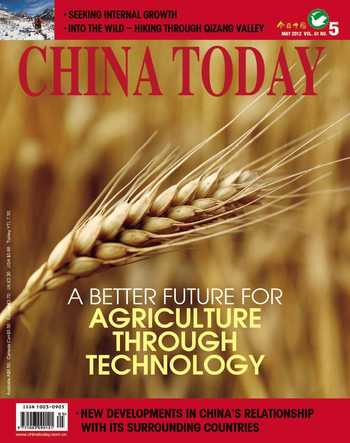A Better Future for Agriculture ThroughTechnology

China is a vast agricultural country, and almost half of its 1.3 billion population live in rural areas. Agriculture is the sector that Chinas emperors and modern and contemporary leaders have considered most crucial throughout the countrys millennia-long history.
In 2011, Chinas central government finance allocated more than RMB one trillion to rural areas, agriculture and farmers – an increase of RMB 183.9 billion over the previous year. The total grain output reached 570 million tons in 2011, maintaining a sustainable increase over eight consecutive years. Chinas import-export volume of farm products, meanwhile, reached US $155.62 billion, 27.6 percent higher than the previous year.
The media spotlight has recently been on Chinas massive population, limited arable land and crop safety. Chinas exports of agricultural products stand at US $60.75 billion – a yearon-year increase of 23 percent, and its imports at US $94.87 billion – an increase of 30.8 percent. This translates into a trade deficit of US $34.12 billion, a figure 47.4 percent higher than the previous year, according to customs statistics.
The year 2012 marks the ninth in which government emphasis has been on rural areas, agriculture and farmers, and on “conquering obstacles in the present system, funding and promoting agricultural technology, and benefiting farmers and rural areas.” Han Changfu, Minister of Agriculture, was quoted as commenting during the 2012 NPC and CPPCC sessions, “As resources are limited, investment in production factors is restrained.” The time has therefore come to rely on technology and high-level human resources to develop Chinese agriculture.
There is now a consensus that China should rely more on science and technology in developing agriculture and pay greater attention to eco-farming.

